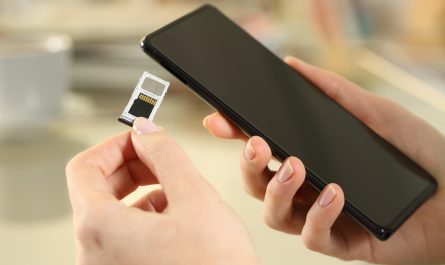At this time, majority of us use more than one SIM card. Lately, a lot of people are switching to eSIM due to its hassle-free flexibility. The basic technology for eSIM vs physical SIM cards is the same. Both technologies connect to the same mobile networks, and their performance is heavily influenced by the criteria described above. Let’s get into different aspects of eSIM and SIM cards further.
Buy Airtel Prepaid with exciting benefits!
Also read: All You Need to Know About eSIM
What is the difference between SIM and eSIM?
eSIMs are set directly into the smartphone. You can activate it remotely, eliminating the requirement for a physical SIM card. You need not be concerned about losing an eSIM. They are often more secure than regular chips since they cannot be stolen.
An eSIM is a virtual SIM card that identifies your device digitally and provides network connectivity. It can be programmed remotely using software and is embedded into smartphones. You don’t need to buy a new SIM card if you wish to switch phones or cellular providers. eSIMs can be used in tablets, smartwatches, etc. They eliminate the need for a slot to insert a physical SIM card and save space.
Also read: eSIM Advantages & Disadvantages
Comparing SIM and eSIM
One thing you may consider comparing SIM and eSIM is that eSIM is highly useful if you’re travelling abroad. Let’s see the difference between eSIM and SIM card.
Saves up space
eSIM frees up SIM card space, allowing you to maximise your smartphone with more functions. This feature of eSIMs makes them ideal for other smaller devices like smartwatches.
Lesser chance of damage or theft
Because eSIMs are embedded into the device, they are less prone to damage or theft than physical SIM cards.
Feasible to travel abroad
An eSIM is an excellent alternative while traveling abroad because it is much cheaper than roaming. An eSIM, like a physical SIM card, allows you to connect to a new mobile network and download data packs. Buying a physical SIM card might take some time, depending on the country you are going to.

Effortless control
Telecom carriers can electronically control the eSIM in case you lose your phone, making it simpler to find.
Easy activation
eSIMs are easier to activate. For example you activate you Airtel eSIM via the Thanks app with these easy steps-
- Install the Airtel Thanks app on your smartphone.
- Log in with the phone number that you want to upgrade to an eSIM.
- Navigate to the ‘Home’ page and scroll down to ‘Shortcuts’.
- Tap on the ‘upgrade to eSIM’ icon to commence the eSIM request.
- Select your device – depending on your preferences, either ‘this device’ or ‘another device’.
- Input the 32-digit EID number for the same device.
Also read: How to activate eSIM – Convert Airtel SIM to eSIM
How have SIM Cards evolved?
SIM cards have developed with mobile phones, from macro-SIM cards to mini, micro, and nano SIM cards, which are now used in smartphones. These cards, known as physical SIM cards, are physically inserted into a mobile phone’s slot.
However, in recent years, an advanced version of the physical SIM card has emerged, known as the eSIM.
Physical SIM Cards Features
Here are some of the features of physical SIM cards-
- Prone to damage and theft.
- They come in different sizes (macro, mini, nano).
- Mobile phones allow for the insertion and removal of physical SIM cards.
- They often come with a new handset.
- They need a physical slot to be placed.
eSIM Cards Features
Now let’s look at the features of eSIM cards-
- They can be activated remotely.
- eSIMs do not take up as much physical space as physical SIM cards.
- They cannot be stolen.
- eSIMs may be reprogrammed and updated remotely.
- eSIMs enable you to swap mobile phone service providers while traveling abroad.
- eSIMs are embedded directly into the smartphone.
- eSIMs allows you to switch between mobile service providers.
Conclusion
It is always up to you to choose between an eSIM and a physical SIM card. There are pros and cons for both types. eSIMs can reduce space by eliminating the need for a real SIM card port. eSIM technology provides more security than standard SIM cards since the data on an eSIM is encrypted. eSIMs are less susceptible to physical damage, loss, or theft. However sometimes in case of emergency, it becomes difficult to switch devices. With a physical SIM card, you always have an option to remove it from the slot.



